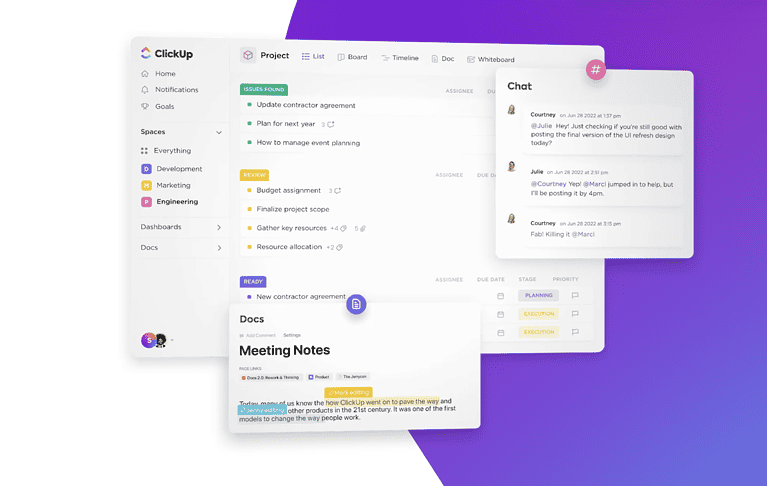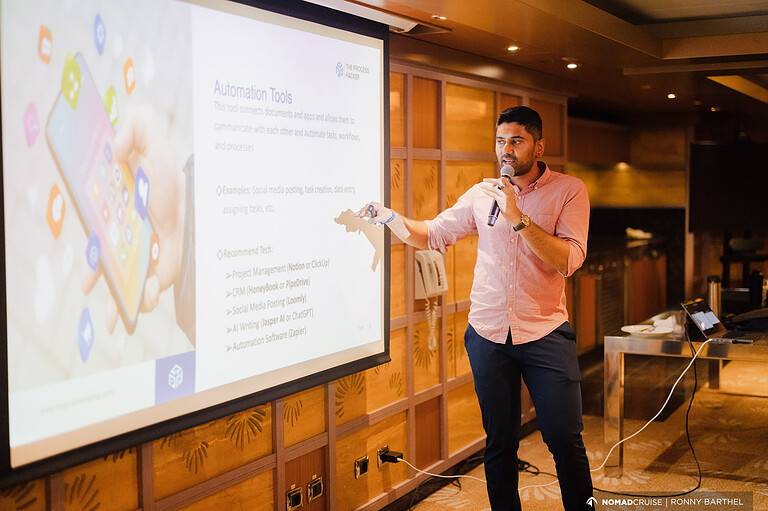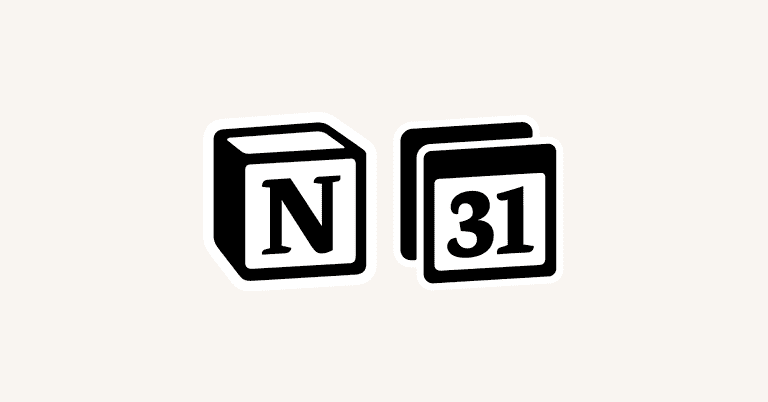Deep Work by Cal Newport | Book Summary
“To build your working life around the experience of flow produced by deep work is a proven path to deep satisfaction.” In Deep Work: Rules for Focused Success in a Distracted, Cal Newport provides actionable advice for how to win in this changing technological, yet distracted and connected age. Professor Cal Newport is a computer science professor at Georgetown University.
Buy Deep Work on Amazon

Deep Work by Cal Newport
Rules For Focused Success In A Distracted World
Introduction: What does Deep Work mean?
He defines his concept of Deep Work as follows:
Deep Work – “Professional activities performed in a state of distraction-free concentration that push your cognitive capabilities to their limit. These efforts create new value, improve your skill, and are hard to replicate.”
A deep work ethic is valuable because it is becoming:
- Increasingly Scarce: You must master the ability to learn quickly due to the changing nature of the economy and the onset of new technology.
- Increasingly Valuable: You must produce amazing results in less time as mediocrity will result in your audience looking elsewhere.
However, Cal Newport presents his cultural criticism that many have forgotten the importance of going deep as their attention is held hostage by low-value activities, which are also known as Shallow Work:
Shallow Work – “Non-cognitively demanding, logistical-style tasks, often performed while distracted. These efforts tend not to create much new value in the world and are easy to replicate.”
Deep work is the ability to focus without distraction on a cognitively demanding task. Cal Newport argues that this superpower will help you stand out and succeed in this competitive world, which follows the hypothesis of his book:
Deep Work Hypothesis – “The ability to perform deep work is becoming increasingly rare at exactly the same time it is becoming increasingly valuable in our economy. As a consequence, the few who cultivate this skill, and then make it the core of their working life, will thrive.
Download the Deep Work by Cal Newport PDF Book Summary
Part 1: The Idea of Deep Work
In the first part of Deep Work, Cal Newport helps you understand the concept and convince you that the Deep Work Hypothesis is true.
Chapter 1: Deep Work is Valuable

The growth and impact of technology are creating a massive restructuring of the economy, in which three groups will be advantaged:
- High-Skilled Workers – can produce valuable results from complex machines
- Superstars – are the best at a given skill that is demanded by the market
- Owners – have access to capital to reinvest in the new technology
Cal Newport focuses on showing you how to be a high-skilled worker or superstar who both share Two Core Abilities:
1) Learning Hard Things Quickly: Learning challenging and complicated things quickly requires deliberate practice, which has Two Core Components:
- You focus on improving a specific skill or mastering a complex idea.
- You receive feedback to better focus your approach to be more productive.
Biologically, repetitive action over a sustained period causes the brain to activate the same neural pathways continuously. Over time, myelin builds around the neurons to improve your cognitive ability to execute that action. Thus, you can quickly master complicated information using an intense focus in a distracted world.
2) Produce Amazing Results: Depth allows you to produce results with both speed and quality, and it follows this Law of Productivity:
High-Quality Work Produced = (Time Spent) x (Intensity of Focus)
Therefore, you can be more productive and maximize results per the time spent working by working intensely on one task. When you switch tasks, you perform poorly as you experience Attention Residue:
Attention Residue – the remainder of your attention is stuck thinking about the original task when switching to a new task
Chapter 2: Deep Work is Rare
In the corporate world, Cal Newport has observed that deep work is becoming deprioritized for three current business trends:
- Open office environments for spontaneous collaboration
- Internal instant messaging for rapid communication
- Encouraging employees to have an active social media presence
However, these trends are distracting and prevent employees from producing meaningful value for their companies. Cal Newport provides three explanations for why deepwork has become rare.
1) Shallow Work is Easier: Employees prefer Shallow Work in the short term due to the following principle:
Principle of Least Resistance – “In a business setting, without feedback on the impact of various behaviors to the bottom line, we tend toward behaviors that are easiest in the moment.”
This principle promotes a “Culture of Connectivity,” which exists for two reasons:
- It is responsive to your needs. If your job did not require quick response times, you would do more advanced planning for your work items.
- It makes your life easier to create a work environment run out of your inbox. If you did not prioritize checking your e-mail inbox, you would put more effort into what to work on and how long to work on each item.
Thus, Shallow Work relieves individuals from concentrating and planning for valuable contributions in the long run.
2) Tendency to Be Busy Instead of Productive: Additionally, as companies cannot set clear goals for their employees, they get trapped into the Metric Black Hole:
Metric Black Hole – the idea of not knowing how to measure individual value to the organization
Without proper metrics for showing value, employees tend to act busy instead of being productive:
Busyness as Proxy for Productivity – “In the absence of clear indicators of what it means to be productive and valuable in their jobs, many knowledge workers turn back toward an industrial indicator of productivity: doing lots of stuff in a visible manner.”
3) Cultural Obsession with Technology: Lastly, we have surrendered our culture and behaviors to technologies, like the internet, captured by the following term:
Technopoly – a society that no longer merely uses technology as a support system but instead is shaped by it
“Deep work is at a severe disadvantage in a technopoly because it builds on values like quality, craftsmanship, and mastery that are decidedly old-fashioned and non-technological.”
Chapter 3: Deep Work is Meaningful

Contrasting from the practical discussions of the value and rarity of deep work, Cal Newport discusses why deep work is meaningful from three different perspectives:
- Neuroscience – the scientific study of the nervous system and brain
- Psychology – the scientific study of the human mind and its functions
- Philosophy – the study of the fundamental nature of knowledge, reality, and existence
1) The Neurological Argument: In Rapt, Winifred Gallagher found one’s perspective is the outcome of the content that you pay attention to. She discussed her concept of the “grand unified theory” of the mind: “Skillful management of attention is the sine qua non of the good life and the key to improving virtually every aspect of your experience.” When you engage in deep work, you push your cognitive abilities to the limit, which results in more interest and positivity in your professional life.
2) The Psychological Argument: In the 1980s, Mihaly Csikszentmihalyi found that “The best moments usually occur when a person’s body or mind is stretched to its limits in a voluntary effort to accomplish something difficult and worthwhile.” This mental state, also known as flow, causes people to perform at their best when engaged in a challenging task. When we engage in deep work regardless of the subject, it generates a flow state, which results in greater happiness and satisfaction.
3) The Philosophical Argument: In All Things Shining, Hubert Dreyfus and Sean Dorrance Kelly explore how sacredness and meaning throughout the history of Western culture. They argue that the key to meaning is within craftsmanship or the action of creating something from nothing. The task of a craftsman “is not to generate meaning, but rather to cultivate in himself the skill of discerning the meanings that are already there.” In any profession, one derives meaning from craftsmanship, not the outcome of the work. So embrace deep work when cultivating your skills to develop a strong appreciation for your work. For more on craftsmanship, check out So Good They Can’t Ignore You (book summary) by Cal Newport.
Download the Free PDF Book Summary for Deep Work by Cal Newport
Part 2: The Rules of Deep Work
In the second part of Deep Work, Cal Newport teaches you the four deep work rules to help you place these atomic habits at the core of your professional life.
Rule #1: Work Deeply

This rule helps you incorporate deep work into your professional life. In a distracted world, “you have a finite amount of willpower that becomes depleted as you use it.” Thus, you need to incorporate smart rituals to best use your limited willpower to maximize the deep work using these six strategies:
1) Decide on Your Depth Philosophy: Determine a deep work scheduling philosophy that fits your specific professional life and circumstances:
- Monastic Philosophy: This philosophy maximizes depth by pursuing a clear vision while eliminating or highly minimizing shallow work.
- Bimodal Philosophy: This philosophy divides your time between clearly defined deep work time with the rest open to other pursuits.
- Rhythmic Philosophy: This philosophy creates a consistent habit of conducting deep work sessions during regular days and times in their schedule.
- Journalistic Philosophy: This philosophy incorporates depth whenever time appears in one’s day or due to the deadlines required by their work.
2) Ritualize Your Deep Work: Establish rituals that fit you and your projects based on these guiding questions that your ritual must answer:
- Where will you work and for how long? Conduct your ritual within a specific time frame and in a particular location like a home office, conference room, or library.
- How will you work once you start working? Establish deep work techniques and processes to structure your time, like banning internet use or incorporating the Pomodoro Technique.
- How will you support your work? Support your mind and work by grabbing coffee, having snacks, interrogating light exercise, or taking structured breaks.
3) Collaborate with Others: The spontaneity of producing creative insights stems from the following theory:
Theory of Serendipitous Creativity – allow people to bump into each other to promote smart collaborations and new ideas, which can be integrated with deep work by following two guidelines:
- Distraction is not suitable for Depth: Divide your spontaneous endeavors from your deep work efforts as each can build on the other’s efforts.
- Leverage the Whiteboard Effect: Work together with someone to dive deeper into a problem and create a more valuable solution than when working by yourself.
4) Execute Like a Business: In The 4 Disciplines of Execution (book summary), the authors formulated the four disciplines (4DX) to help companies successfully execute high-level strategies. Cal Newport adapted the 4DX framework for deep work habits:
- Focus on the Wildly Important: Focus intensely on a smaller number of meaningful goals to produce amazing results.
- Act on the Lead Measures: Measure success using leading metrics, which are the actions directly within your control that drive success on your lagging metrics.
- Keep a Compelling Scoreboard: Track and record lead measures to motivate you to take action on your goal and improve performance.
- Create a Cadence of Accountability: Establish regular, frequent reviews to confront metrics, solve problems, and commit future actions.
5) Be Lazy: Incorporate downtime into your schedule to improve your productivity, depth, and create valuable results. Downtime is an important practice because it:
- Helps Insights: Shutdown allows your conscious mind to rest and your unconscious mind to sort through and provide insights for your most complex task.
- Helps Recharge: Shutdown restores your energy for deep work. If you interrupt or ignore shutting down, you will reduce your effectiveness for tomorrow.
- Replaces Shallow Work: Since you have limited work capacity, work done during this time generally does not matter and tends to be low-value.
To practice shutdown, you should not do any more work at a certain point and follow a shutdown ritual:
Shutdown Ritual – the process of reviewing every incomplete task, goal, or project to either plan for its completion or capture it in a place to revisit it
Rule #2: Embrace Boredom

Cal Newport presents the second rule as several strategies for habit forming:
- Improve your ability to focus deeply.
- Overcome your appetite for distraction.
1) Take Breaks from Focus Instead of Distraction: First, get used to resisting distractions and preventing such behaviors from hijacking your attention. Schedule in advance when you want to use the Internet or social media, avoid these distractions outside those times, and work until allowed to use them. Cal Newport provides three rules to help you succeed:
- Use this strategy even if your work requires heavy Internet use or timely email responses.
- Do not succumb to using the Internet outside the scheduled blocks for Internet use.
- Schedule Internet use at both work and home to improve your ability to focus.
2) Work with Rooseveltian Intensity: Inspired by the undergraduate work behaviors of Theodore Roosevelt, this strategy causes enables deep work in intense sprints:
- Identify a deep task high on your priority list.
- Estimate how long you would typically work on this task.
- Set a hard deadline that drastically reduces this time.
- If possible, commit publicly to the artificial deadline.
- Work with high intensity until your assignment is finished.
3) Meditate Productivity: This strategy focuses you on a well-defined professional problem during a time in which you are physically but not mentally engaged. Similar to mindfulness meditation, it requires practice to master:
- Focus your attention back to the issue when your mind wanders.
- Loop over and over on what you already know about the problem.
- Review relevant variables and store them in your working memory.
- Define the specific next-step questions that you need to answer using these variables.
- Consolidate your gains by reviewing the answer you identified.
4) Memorize a Deck of Cards: Memory training improves your concentration, so Cal Newport teaches you how to memorize a shuffled deck of cards. Avoid using brute-force memorization, as this leads to burnout and is not compatible with how the brain works. First, he helps you visualize your house, establish memorable objects, and associate memorable people with each card. Then, you can walk through your mental home, draw a card, associate each memorable person with an object, and rattle off the cards from the associations. For more on improving memorization, check out Unlimited Memory (book summary).
Download the PDF Book Summary for Deep Work by Cal Newport
Rule #3: Quit Social Media
Social media tools fragment our time and attention, as most people take the following approach:
Any-Benefit Approach to Network Tool Selection – Choose social media based on finding any possible benefit or the fear of missing out by not using them.
This approach ignores the downside of social media, but there is a middle ground by using this more stringent approach:
Craftsman Approach to Tool Selection – Identify the keys to success and happiness in your professional and personal experiences. Adopt a social media platform only if its positive impacts substantially exceed its negative impacts.
1) Apply the Law of the Vital Few: Decide what network tools matter using the 80/20 Rule:
- Identify the high-level goals in your professional life and personal life.
- List two to three most important activities that satisfy the goal.
- Consider the network tools in relation to the key activities.
- Ask yourself: Does the tool positively or negatively impact the completion of the activity?
Thus, you are more successful in achieving your goals as you focus on high-value activities that yield greater benefits. Accordingly, remove low-value network tools with smaller gains.
2) Quit Social Media Temporarily: Ban yourself from using social media without telling people, wait 30 days, and then ask yourself the following for each account:
- Would the last 30 days have been notably better if I had been able to use this service?
- Did people care that I wasn’t using this service?
If you answer “no” to both questions, then quit the social media platform. If you answer a clear “yes” to both, then keep the platform.
3) Don’t Entertain Yourself with the Internet: Entertainment-focused websites are addicting and take your free time. Thus, think harder about how you spend your leisure time. Your mind defaults to whatever catches your attention, so instead, decide how to spend your time in advance. Meaningful free time results in more fulfillment in your professional life and personal life.
Rule #4: Drain the Shallows

This rule presents several strategies to drastically reduce shallow work and replace it with deep work.
1) Schedule Every Minute of Your Day: Decide in advance how you will spend time and schedule every minute of your workday:
- Plan your workday by dividing the hours into focus blocks and assigning tasks to each block. Use the schedule to guide you as you may underestimate the time needed for most things.
- Use conditional overflow blocks for unknown activity lengths. Follow an activity within each block until finished, and then immediately start working on a new activity.
- Be liberal with your ask blocks throughout your day as things come up and distractions occur.
2) Quantify the Depth of Every Activity: Evaluate activities on the shallow-to-deep scale by asking:
“How long would it take (in months) to train a smart recent college graduate with no specialized training in my field to complete this task?”
- Deep Work: Task that requires one time, effort, and extensive training to replicate.
- Shallow Work: Task that one can learn quickly and does not need expertise.
This approach helps you determine the shallowness or depth of various tasks, so you can bias your time toward deep work.
3) Budget Your Shallow Work Time: Ask yourself, “What percentage of my time should be spent on shallow work?”
Whether you have a boss or not, decide on a specific answer and stick to this time budget. You may have to change your behavior to follow your budget by saying no to shallow projects. Also, you may become aware of how little time actually produces value. If you get the sense that you primarily do shallow work then find a new job that supports deep work.
4) Finish Your Work by Five Thirty: Cal Newport recommends not working after 5:30 PM using this principle:
Fixed-Schedule Productivity – the commitment of having the firm goal of not working past a specific time, and working backward to use productivity strategies to satisfy this commitment
This strategy reduces the shallow work in lieu of deep work to generate more value. Also, this method creates a scarcity mindset, which results in intentionality with time to get the high-value work done.
5) Become Hard to Reach: Cal Newport provides three tips to help get control of your inbox:
- Make People Who Send You Email Do More Work: Use a sender filter to set expectations and have people filter themselves before contacting you.
- Do More Work When You Send or Reply to Emails: Use the process-centric approach to conclude the project in the email. Then, respond with a description of the identified process, the current step in the process, and the next action.
- Don’t Respond: Avoid responding if the sender does not make a convincing case that a reply is worthwhile and/or minimize the effort required by the sender.
Download and Save the Deep Work PDF Book Summary
Next Steps
Deep Work is the ability to focus without distraction on a mind-intensive task. In this book, Cal Newport shows you how to thrive by working deeply within such a connected and distracted world.
I hope this Deep Work summary helps you be more productive and inspires you to get your own copy. For more by Cal Newport, check out the book, So Good They Can’t Ignore You (book summary). He goes on an intellectual journey to answer this question: “Why do some people end up loving what they do, while so many others fail at this goal?”









